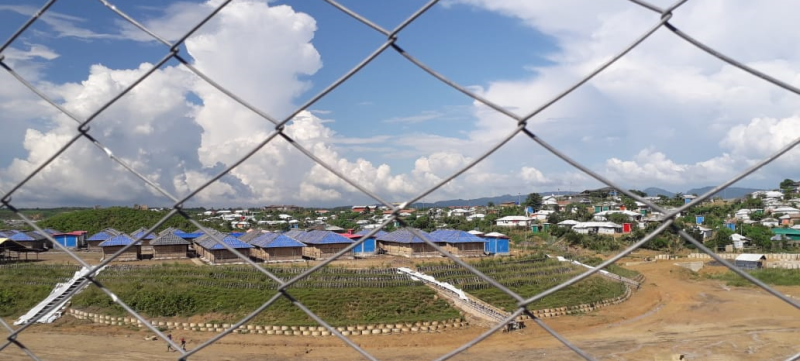Where We Work
See our interactive map


I have been a midwife in these camps for the last two years. Photo courtesy of Maksuma Akter.
We face many challenges, but one of the biggest is building women’s trust in us.
Within a seven-block area live over 20,000 people. Most live in sheds, and some families are seven to a single room. Children don’t run free in the streets—they are confined to small areas.
These are refugees, living in Rohingya refugee camps.
They have fled their country to escape persecution. But most of them left lives of possession to find themselves inside a fence with nothing but the clothes on their backs and their families. They are anxious, depressed, and suspicious.
The women continue to get pregnant because they do not have knowledge of long-term family planning solutions. I have been a midwife in these camps for the last two years. I am 23 years old.
When I was 10 years old, I watched as my cousin gave birth at home to a stillborn baby. The devastation of that moment, in some ways, inspired me to grow up and help women to have healthy babies.
It is my deepest desire to serve people and provide mothers with the pleasure and happiness of bringing healthy life into this world.But in the beginning of my time as a midwife inside the camps, it was very difficult to help pregnant women.
Our role as midwives over the last two years has been a job of trust-building.
For one thing, the refugees did not trust us midwives. In their minds, we were too young to know what we were doing. We didn’t speak the same language. Even though we were trained well, most refugees preferred in-home births with traditional birth attendants, who do not have the proper training to deal with the unexpected outcomes of various births.
There was so much mistrust that even when mothers would have facility births, some with postpartum issues would refuse our referrals to a hospital outside the camps, even when we provided ambulance transportation.
Shortly after I started working as a midwife, there was a woman with postpartum hemorrhaging that desperately needed a blood transfusion. But no one in the camp would donate their blood. This woman died in an ambulance.
Our role as midwives over the last two years has been a job of trust-building. When a woman comes into our facility to confirm pregnancy, we try to educate her. We let her know of important prenatal care. Proper nutrition. We reach out to family members to create a network of support to promote a proper birth plans. We identify high-risk pregnancies and create schedules for follow-up appointments. Our primary health care facility is a place to build trust between mothers and health care professionals.
A woman once came into our facility. She was pregnant and had suffered eight miscarriages. She had never received proper care from midwives or professionals.
We established trust and built a relationship that would ensure the health of her and her child. She delivered a healthy baby in our facility.
Over the last two years, the gap between refugees and midwives has gotten smaller. The number of in-facility births is much higher now. Also, women are starting to use long-term family planning solutions, which will reduce numbers of unwanted pregnancies.A few weeks ago, I delivered a baby who was not breathing. Upon birth, we used our expertise and resources in the facility to help bring breath to that baby. It gives me great pleasure and joy to have the privilege of placing a healthy, newborn baby into the arms of its mother.
I love my work. Thank you.
Get stories from midwives and nurses around the world delivered right to your inbox: sign up for our mailing list.
And join the conversation:
#GivingTuesdayNow #MidwivesLead #IDM2020 #HealthWorkersCount #IThank
Get the latest updates from the blog and eNews




